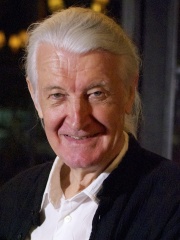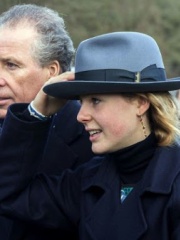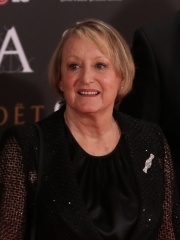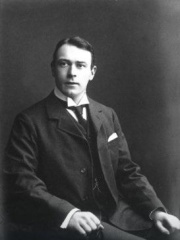
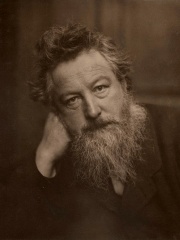
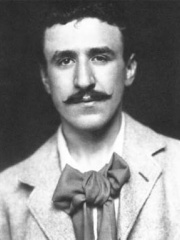
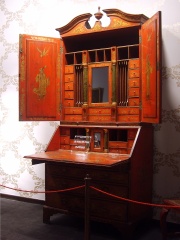
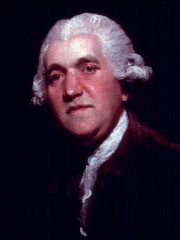
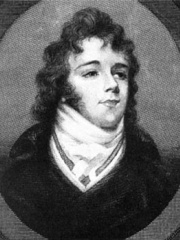

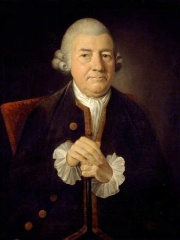
The Most Famous
DESIGNERS from United Kingdom
This page contains a list of the greatest British Designers. The pantheon dataset contains 104 Designers, 20 of which were born in United Kingdom. This makes United Kingdom the birth place of the most number of Designers.
Top 10
The following people are considered by Pantheon to be the top 10 most legendary British Designers of all time. This list of famous British Designers is sorted by HPI (Historical Popularity Index), a metric that aggregates information on a biography's online popularity. Visit the rankings page to view the entire list of British Designers.

1. Thomas Andrews (1873 - 1912)
With an HPI of 78.98, Thomas Andrews is the most famous British Designer. His biography has been translated into 40 different languages on wikipedia.
Thomas Andrews Jr. (7 February 1873 – 15 April 1912) was a British businessman and shipbuilder, who was managing director and head of the drafting department of the shipbuilding company Harland and Wolff in Belfast, Ireland. He was the naval architect in charge of the plans for the ocean liner Titanic and perished along with more than 1,500 people when the ship sank on her maiden voyage.

2. William Morris (1834 - 1896)
With an HPI of 73.28, William Morris is the 2nd most famous British Designer. His biography has been translated into 59 different languages.
William Morris (24 March 1834 – 3 October 1896) was an English textile designer, poet, artist, writer, and socialist activist associated with the British Arts and Crafts movement. He was a major contributor to the revival of traditional British textile arts and methods of production. His literary contributions helped to establish the modern fantasy genre, while he campaigned for socialism in fin de siècle Great Britain. Morris was born in Walthamstow, Essex, to a wealthy middle-class family. He came under the strong influence of medievalism while studying classics at Oxford University, where he joined the Birmingham Set. After university, he married Jane Burden, and developed close friendships with Pre-Raphaelite artists and poets such as Dante Gabriel Rossetti, Algernon Charles Swinburne, and Edward Burne-Jones, as well as with Neo-Gothic architect Philip Webb. Webb and Morris designed Red House in Kent where Morris lived from 1859 to 1865, before moving to Bloomsbury, central London. In 1861, Morris founded the Morris, Marshall, Faulkner & Co. decorative arts firm with Burne-Jones, Rossetti, Webb, and others, which became highly fashionable and much in demand. The firm profoundly influenced interior decoration throughout the Victorian period, with Morris designing tapestries, wallpaper, fabrics, furniture, and stained glass windows. In 1875, he assumed total control of the company, which was renamed Morris & Co. From 1871, Morris rented the rural retreat of Kelmscott Manor, Oxfordshire, while also retaining a main home in London. He was greatly influenced by visits to Iceland with Eiríkur Magnússon, and he produced a series of English-language translations of Icelandic Sagas. He also achieved success with the publication of his epic poems and novels, namely The Earthly Paradise (1868–1870), A Dream of John Ball (1888), the utopian News from Nowhere (1890), and the fantasy romance The Well at the World's End (1896). In 1877, he founded the Society for the Protection of Ancient Buildings to campaign against the damage caused by architectural restoration. By the influence of medievalism and Christian socialism in the 1850s he became a sceptic of industrial capitalism. After reading works of Henry George, Alfred Russel Wallace, and Karl Marx in the 1880s Morris became a committed revolutionary socialist activist until his final acceptance of parliamentary socialism at 1896. He founded the Socialist League in 1884 after an involvement in the Social Democratic Federation (SDF), but he broke with that organisation in 1890. In 1891, he founded the Kelmscott Press to publish limited-edition, illuminated-style print books, a cause to which he devoted his final years. Morris is recognised as one of the most significant cultural figures of Victorian Britain. He was best known in his lifetime for his poetry, although he posthumously became better known for his designs. The William Morris Society founded in 1955 is devoted to his legacy, while multiple biographies and studies of his work have been published. Many of the buildings associated with his life are open to visitors, much of his work can be found in art galleries and museums, and his designs are still in production.

3. Charles Rennie Mackintosh (1868 - 1928)
With an HPI of 67.73, Charles Rennie Mackintosh is the 3rd most famous British Designer. His biography has been translated into 48 different languages.
Charles Rennie Mackintosh (7 June 1868 – 10 December 1928) was a Scottish architect, designer, water colourist and artist. His artistic approach had much in common with European Symbolism. His work, alongside that of his wife Margaret Macdonald, was influential on European design movements such as Art Nouveau and Secessionism and praised by great modernists such as Josef Hoffmann. Mackintosh was born in Glasgow, Scotland and died in London, England. He is among the most important figures of the Modern Style.

4. Thomas Chippendale (1718 - 1779)
With an HPI of 67.65, Thomas Chippendale is the 4th most famous British Designer. His biography has been translated into 32 different languages.
Thomas Chippendale (June 1718 – 1779) was an English woodworker in London, designing furniture in the mid-Georgian, English Rococo, and Neoclassical styles. In 1754 he published a book of his designs in a trade catalogue titled The Gentleman and Cabinet Maker's Director—the most important collection of furniture designs published in England to that point which created a mass market for furniture—upon which success he became renowned. According to the Victoria and Albert Museum, "so influential were his designs, in Britain and throughout Europe and America, that 'Chippendale' became a shorthand description for any furniture similar to his Director designs". The designs are regarded as representing the current British fashion for furniture of that period and are now reproduced globally. He was buried 16 November 1779, according to the records of St Martin-in-the-Fields, in the cemetery since built upon by the National Gallery. Chippendale furniture is highly valued; a padouk cabinet that was offered for auction during 2008 sold for £2,729,250.
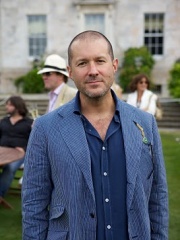
5. Jony Ive (b. 1967)
With an HPI of 67.63, Jony Ive is the 5th most famous British Designer. His biography has been translated into 47 different languages.
Sir Jonathan Paul Ive (born 27 February 1967) is a British-American designer. He is best known for his work at Apple Inc., where he was senior vice president of industrial design and chief design officer. Ive is the founder of LoveFrom, a creative collective that works with Ferrari, Airbnb, OpenAI and other global brands. He has been chancellor of the Royal College of Art in London since 2017 and a trustee of the British Museum since June 2025. Ive joined Apple in September 1992, and was promoted to senior vice president of industrial design in the late 1990s after the return of co-founder Steve Jobs. He was Chief Design Officer from 2015 until his departure in July 2019. Working closely with Jobs, Ive played a vital role in the designs of products including the Apple Watch, iMac, Power Mac G4 Cube, iPod, iPhone, iPad, MacBook, and the user interface of Apple's mobile operating system iOS. He was also responsible for the design of major architectural projects, including Apple's Cupertino headquarters complex, Apple Park, and Apple Stores. Born in London, Ive lived there until his family moved to Stafford when he was about 12. He studied design at Newcastle Polytechnic and later joined the London-based design firm Tangerine, where he worked on client projects for LG and Ideal Standard as well as Apple. After leaving Tangerine to join Apple full time, he began designing the decade's PowerBooks and Macs. He acquired US citizenship in 2012. He was invited to join the Royal College of Art in May 2017 as its head of college, serving a fixed five-year term until May 2022. Ive has received accolades and honours for his designs and patents. In the United Kingdom, he has been appointed a Royal Designer for Industry (RDI), an Honorary Fellow of the Royal Academy of Engineering (HonFREng), and a Knight Commander of the Order of the British Empire (KBE). In 2018, he was awarded the Hawking Fellowship of the Cambridge Union Society. In a 2004 BBC poll of cultural writers, Ive was ranked the most influential person in British culture. His designs have been described as integral to the successes of Apple, one of the world's largest information technology companies by revenue and market capitalisation.

6. Josiah Wedgwood (1730 - 1795)
With an HPI of 65.07, Josiah Wedgwood is the 6th most famous British Designer. His biography has been translated into 38 different languages.
Josiah Wedgwood (12 July 1730 – 3 January 1795) was an English potter, entrepreneur and abolitionist. Founding the Wedgwood company in 1759, he developed improved pottery bodies by systematic experimentation, and was the leader in the industrialisation of the manufacture of European pottery. The renewed classical enthusiasms of the late 1760s and early 1770s were of major importance to his sales promotion. His expensive goods were in much demand from the upper classes, while he used emulation effects to market cheaper sets to the rest of society. Every new invention that Wedgwood produced – green glaze, creamware, black basalt, and jasperware – was quickly copied. Having once achieved efficiency in production, he obtained efficiencies in sales and distribution. His showrooms in London gave the public the chance to see his complete range of tableware. Wedgwood's company never made porcelain during his lifetime, but specialised in fine earthenwares and stonewares that had many of the same qualities, but were considerably cheaper. He made great efforts to keep the designs of his wares in tune with current fashion. He was an early adopter of transfer printing which gave similar effects to hand-painting for a far lower cost. Meeting the demands of the consumer revolution that helped drive the Industrial Revolution in Britain, Wedgwood is credited as a pioneer of modern marketing. He pioneered direct mail, money-back guarantees, self-service, free delivery, buy one get one free, and illustrated catalogues. A prominent abolitionist fighting slavery, Wedgwood is remembered too for his Am I Not a Man and a Brother? anti-slavery medallion, which had been commissioned by Joseph Hooper, a founder of the Society for Effecting the Abolition of the Slave Trade. The medallion used the design from that society. Wedgwood was a member of the Darwin–Wedgwood family, and he was the grandfather of Charles and Emma Darwin.

7. Beau Brummell (1778 - 1840)
With an HPI of 63.76, Beau Brummell is the 7th most famous British Designer. His biography has been translated into 21 different languages.
George Bryan "Beau" Brummell (7 June 1778 – 30 March 1840) was an important figure in Regency England, and for many years he was the arbiter of British men's fashion. At one time, he was a close friend of the Prince Regent, the future King George IV, but after the two quarrelled and Brummell got into debt, he had to take refuge in France. Eventually, he died from complications of neurosyphilis in Caen. Brummell was remembered afterwards as the preeminent example of the dandy, and a whole literature was founded upon his manner and witty sayings, which have persisted until today. His name is still associated with style and good looks and has been given to a variety of modern products to suggest their high quality.

8. Alexander McQueen (1969 - 2010)
With an HPI of 62.11, Alexander McQueen is the 8th most famous British Designer. His biography has been translated into 48 different languages.
Lee Alexander McQueen (17 March 1969 – 11 February 2010) was a British fashion designer and couturier. He founded his own Alexander McQueen label in 1992 and was chief designer at Givenchy from 1996 to 2001. His achievements in fashion earned him four British Designer of the Year awards (1996, 1997, 2001 and 2003), as well as the Council of Fashion Designers of America International Designer of the Year award in 2003. McQueen died by suicide in 2010 at the age of 40, at his home in Mayfair, London, shortly after the death of his mother. McQueen had a background in tailoring before he studied fashion and embarked on a career as a designer. His MA graduation collection caught the attention of the fashion editor Isabella Blow, who became his patron. McQueen's early designs, particularly the radically low-cut "bumster" trousers, gained him recognition as an enfant terrible in British fashion. In 2000, McQueen sold 51% of his company to the Gucci Group, which established boutiques for his label worldwide and expanded its product range. During his career, he designed a total of 36 collections for his brand, including his graduation collection and an unfinished final collection. Following his death, his longtime collaborator Sarah Burton took over as creative director of his label. As a designer, McQueen was known for sharp tailoring, historicism, and imaginative designs that often verged into the controversial. He explored themes such as romanticism, sexuality, and death, and many collections had autobiographical elements. Among his best-known individual designs are the bumsters, the skull scarf, and the armadillo shoes. McQueen's catwalk shows were noted for their drama and theatricality, and they often ended with elements of performance art, such as a model being spray painted by robots (No. 13, Spring/Summer 1999), or a life-size illusion of Kate Moss (The Widows of Culloden, Autumn/Winter 2006). McQueen's legacy in fashion and culture is extensive. His designs were showcased in two retrospective exhibitions: Alexander McQueen: Savage Beauty (2011 and 2015) and Lee Alexander McQueen: Mind, Mythos, Muse (2022). He remains the subject of journalistic and academic analysis, including the book Gods and Kings (2015) by fashion journalist Dana Thomas and the documentary film McQueen (2018).

9. John Baskerville (1706 - 1775)
With an HPI of 60.44, John Baskerville is the 9th most famous British Designer. His biography has been translated into 22 different languages.
John Baskerville (baptised 28 January 1707 – 8 January 1775) was an English businessman, in areas including japanning and papier-mâché, but he is best remembered as a printer and type designer. He was also responsible for inventing "wove paper", which was considerably smoother than "laid paper", allowing for sharper printing results.

10. Storm Thorgerson (1944 - 2013)
With an HPI of 57.95, Storm Thorgerson is the 10th most famous British Designer. His biography has been translated into 33 different languages.
Storm Elvin Thorgerson (28 February 1944 – 18 April 2013) was an English art director and music video director. He is best known for closely working with the group Pink Floyd through most of their career, and also created album or other art for Led Zeppelin, Muse, Phish, Black Sabbath, 10cc, the Alan Parsons Project, the Mars Volta, Catherine Wheel and the Cranberries.
People
Pantheon has 20 people classified as British designers born between 1706 and 2002. Of these 20, 8 (40.00%) of them are still alive today. The most famous living British designers include Jony Ive, Paul Smith, and Matthew Carter. The most famous deceased British designers include Thomas Andrews, William Morris, and Charles Rennie Mackintosh.
Living British Designers
Go to all RankingsJony Ive
1967 - Present
HPI: 67.63
Paul Smith
1946 - Present
HPI: 56.59
Matthew Carter
1937 - Present
HPI: 51.58
Jenny Beavan
1950 - Present
HPI: 50.50
Sandy Powell
1960 - Present
HPI: 49.69
Thomas Heatherwick
1970 - Present
HPI: 46.02
Lady Margarita Armstrong-Jones
2002 - Present
HPI: 41.85
Jacqueline Durran
2000 - Present
HPI: 31.01
Deceased British Designers
Go to all RankingsThomas Andrews
1873 - 1912
HPI: 78.98
William Morris
1834 - 1896
HPI: 73.28
Charles Rennie Mackintosh
1868 - 1928
HPI: 67.73
Thomas Chippendale
1718 - 1779
HPI: 67.65
Josiah Wedgwood
1730 - 1795
HPI: 65.07
Beau Brummell
1778 - 1840
HPI: 63.76
Alexander McQueen
1969 - 2010
HPI: 62.11
John Baskerville
1706 - 1775
HPI: 60.44
Storm Thorgerson
1944 - 2013
HPI: 57.95
Laura Ashley
1925 - 1985
HPI: 56.64
Bill Moggridge
1943 - 2012
HPI: 55.01
Yvonne Blake
1940 - 2018
HPI: 53.78
Overlapping Lives
Which Designers were alive at the same time? This visualization shows the lifespans of the 11 most globally memorable Designers since 1700.


